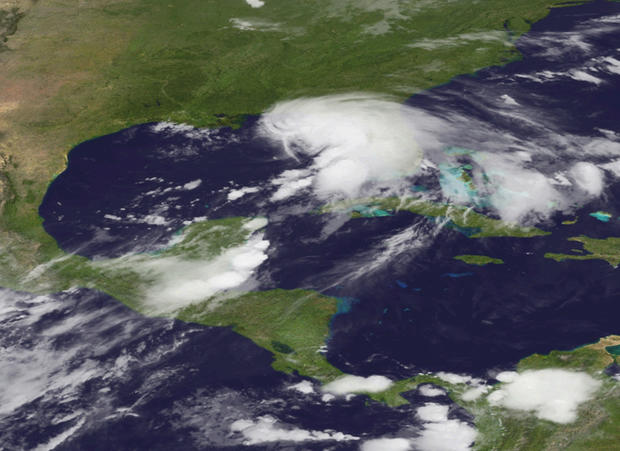Tropical Storm warnings for Debby revised
Last Updated 7:00 p.m. ET
(CBS/AP) MIAMI - The threat of Tropical Storm Debby to Louisiana has lessened, according to the latest forecast from the National Hurricane Center.
While tropical storm warnings have been extended southward along the western coast of Florida, the warning for Louisiana has been discontinued.
Coastal Alabama and parts of Florida, including the Panhandle, remained under tropical storm warnings.
As of late Sunday, the latest forecast map shows the center of the storm 100 miles south-southwest of Apalachicola, Fla., and likely to meander northward for several days before making landfall. Maximum sustained winds are 60 mph, with higher gusts. Tropical storm force winds extend outward up to 200 miles.
Forecasters say some slight strengthening is possible during the next 48 hours.
Debby already had dumped heavy rain on parts of Florida and spawned some isolated tornadoes, causing some damage to homes and knocking down power lines. High winds forced the closure of an interstate bridge that spans Tampa Bay and links St. Petersburg with areas to the southeast.
It was not completely clear when or where Debby would make landfall, though original models of the storm showed it reaching hurricane strength by the time it hit the Louisiana coastline.
Near the mouth of the Mississippi southeast of New Orleans, Plaquemines Parish President Billy Nungesser said officials were making preparations to protect the main highway from tidal flooding.
At least one tornado linked to the storm touched down Saturday in southwest Florida, but no injuries were reported. Another was reported Sunday in Venice, damaging some homes.
"This is quite common with this type of storm," senior hurricane specialist Stacy Stewart with the National Hurricane Center said of the twisters. "They tend to not be very large or long-lived, which can be difficult to detect on radar. So people need to keep an eye on the sky."
However, despite warnings in the Panhandle, Debby hadn't totally dampened vacations.
Thousands of people were on the beach at Pensacola Beach, Fla., on Sunday morning. Many used their phones to take photos of huge waves crashing into the concrete supports of a fishing pier. There wasn't any rain yet; just gusty winds and dark, fast-moving clouds.
Few people were in the water. Red flags warned tourists to stay out of the surf, and lifeguards cruised the sand on all-terrain vehicles, blowing whistles at anyone who got near the waves.
Workers with rental companies used pickup trucks to gather chairs and umbrellas as a precaution against an unusually high tide.
Forecasters said Debby could reach hurricane strength sometime over the next few days. Meanwhile, up to 10 inches of rain were possible along the coast, with isolated amounts possibly reaching 15 inches.
Debby forced the suspension of 8 percent of the region's oil and gas production.
The government reported that nine production platforms and one drilling rig were evacuated. The suspended crude production amounts to about 2 percent of U.S production and about 0.1 percent of global production. The reduced production is not expected to impact oil prices unless the storm strengthens and forces more production platforms to close.
Out in the Gulf, Anadarko Petroleum removed all non-essential personnel and expected to close four facilities in the central and eastern Gulf. Chevron, Royal Dutch Shell and Marathon Oil said non-essential personnel were being removed but production was not being affected. ExxonMobil reported that its operations were unaffected.
